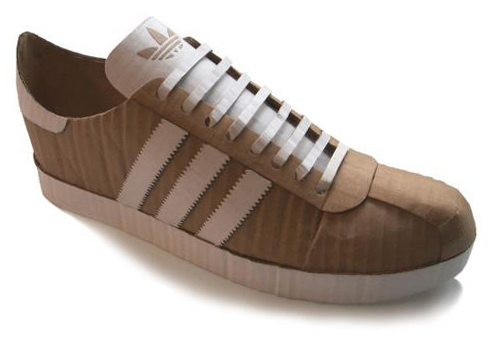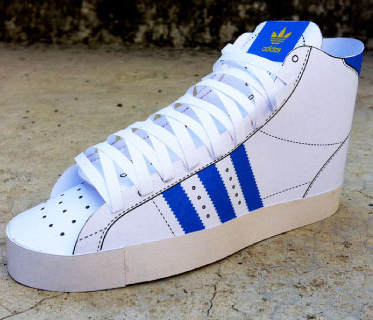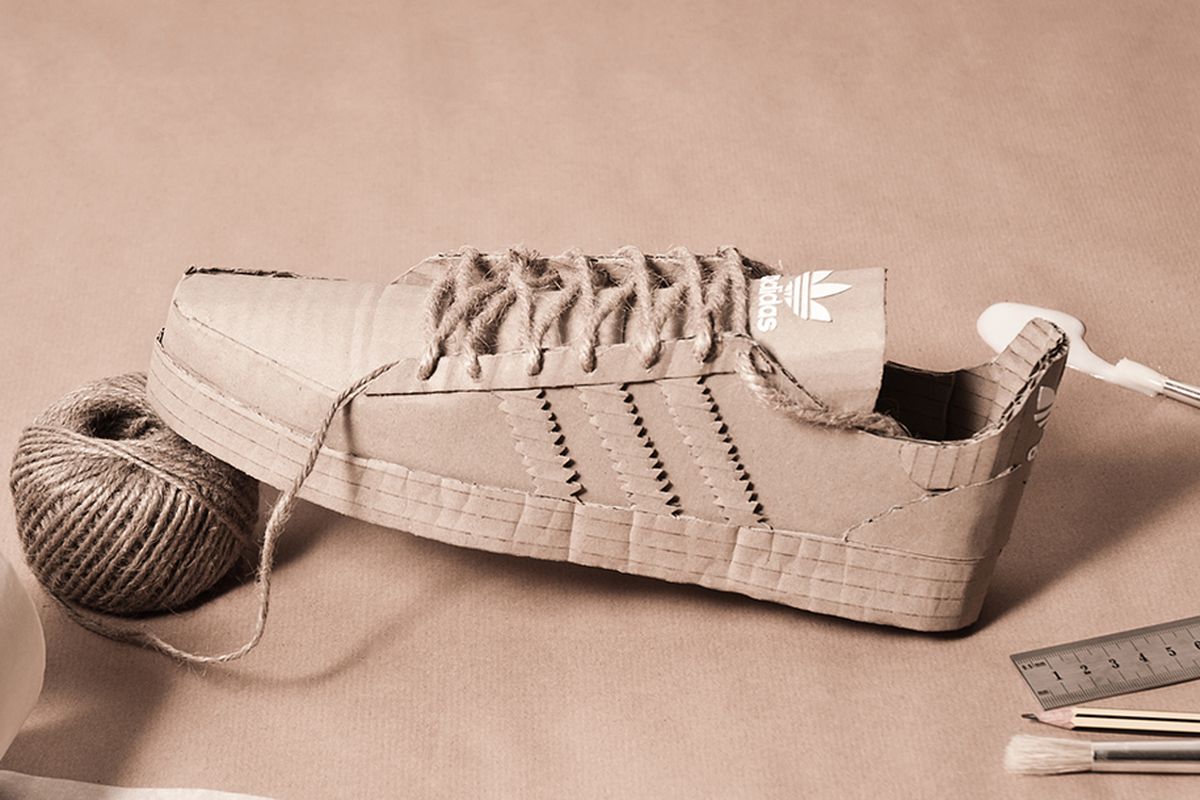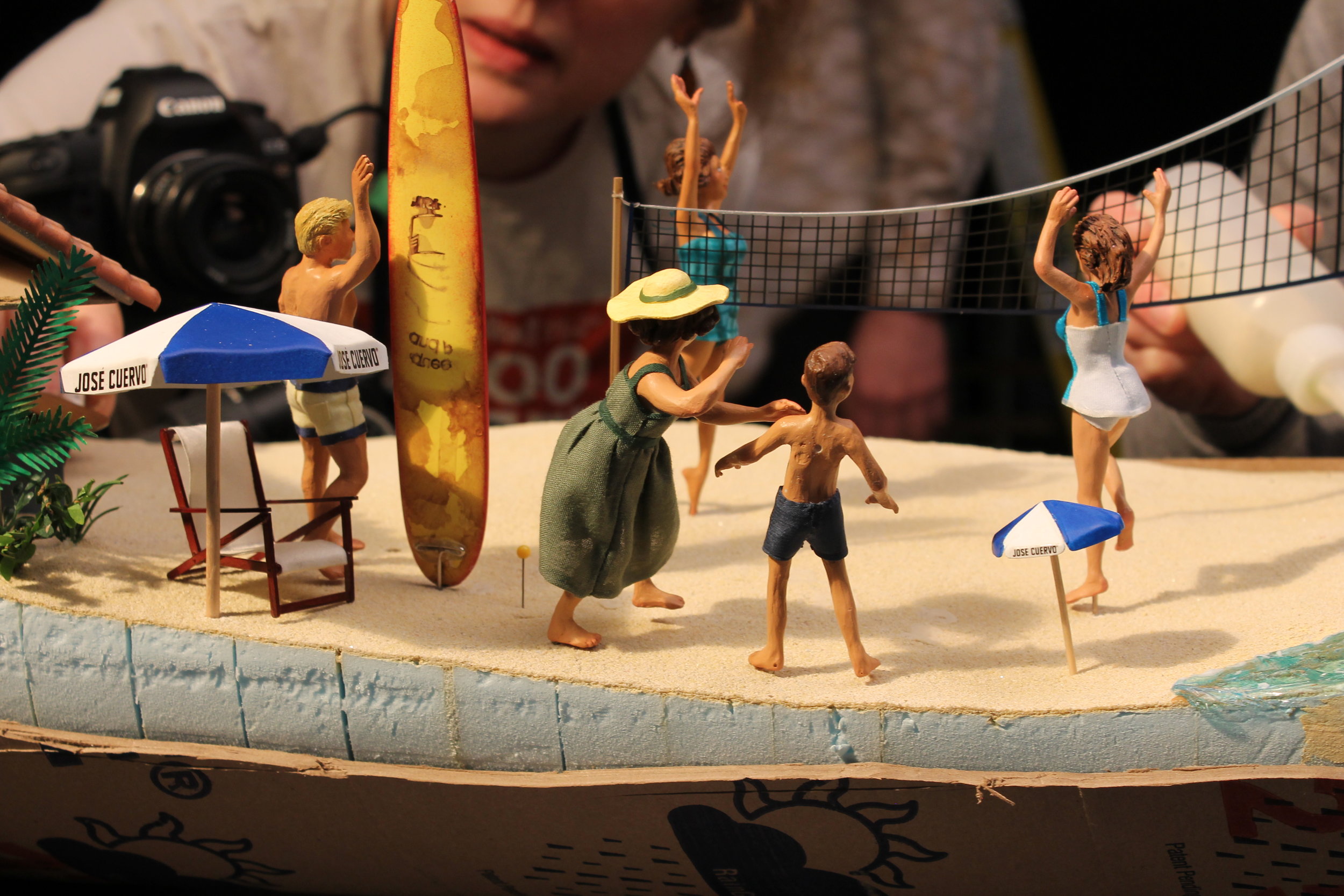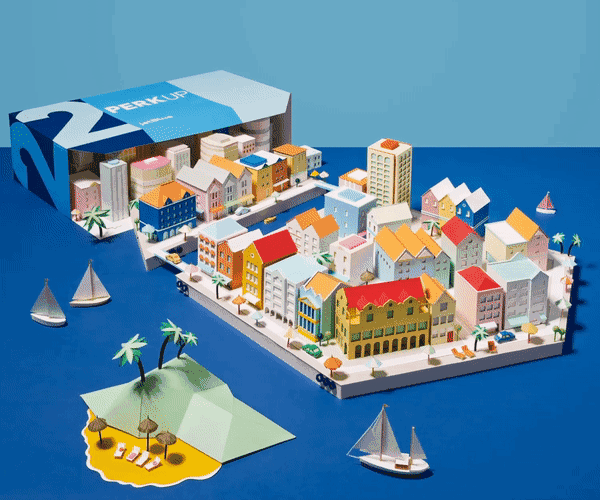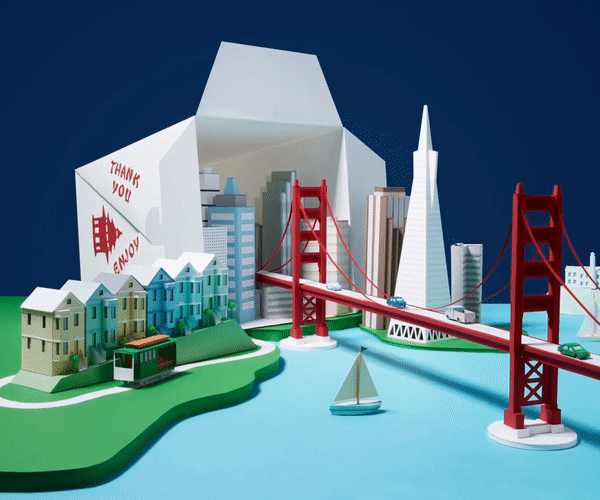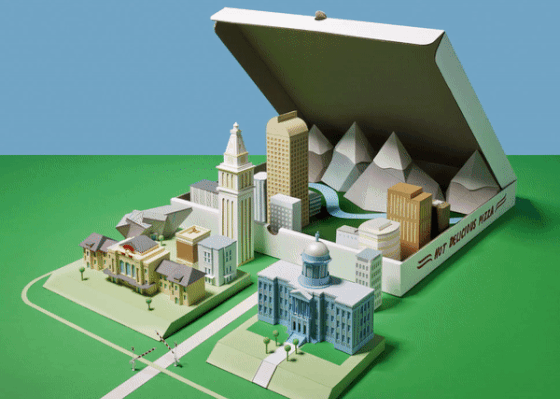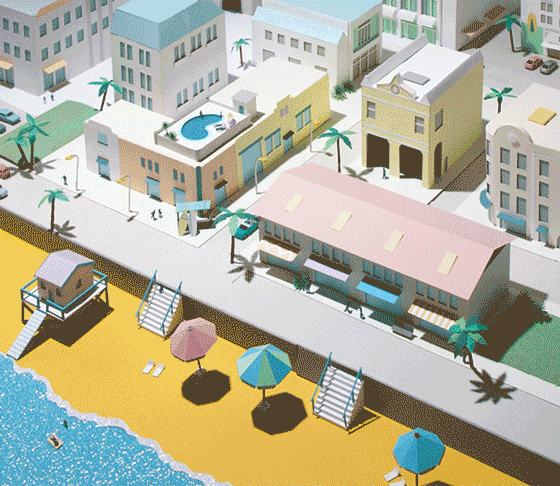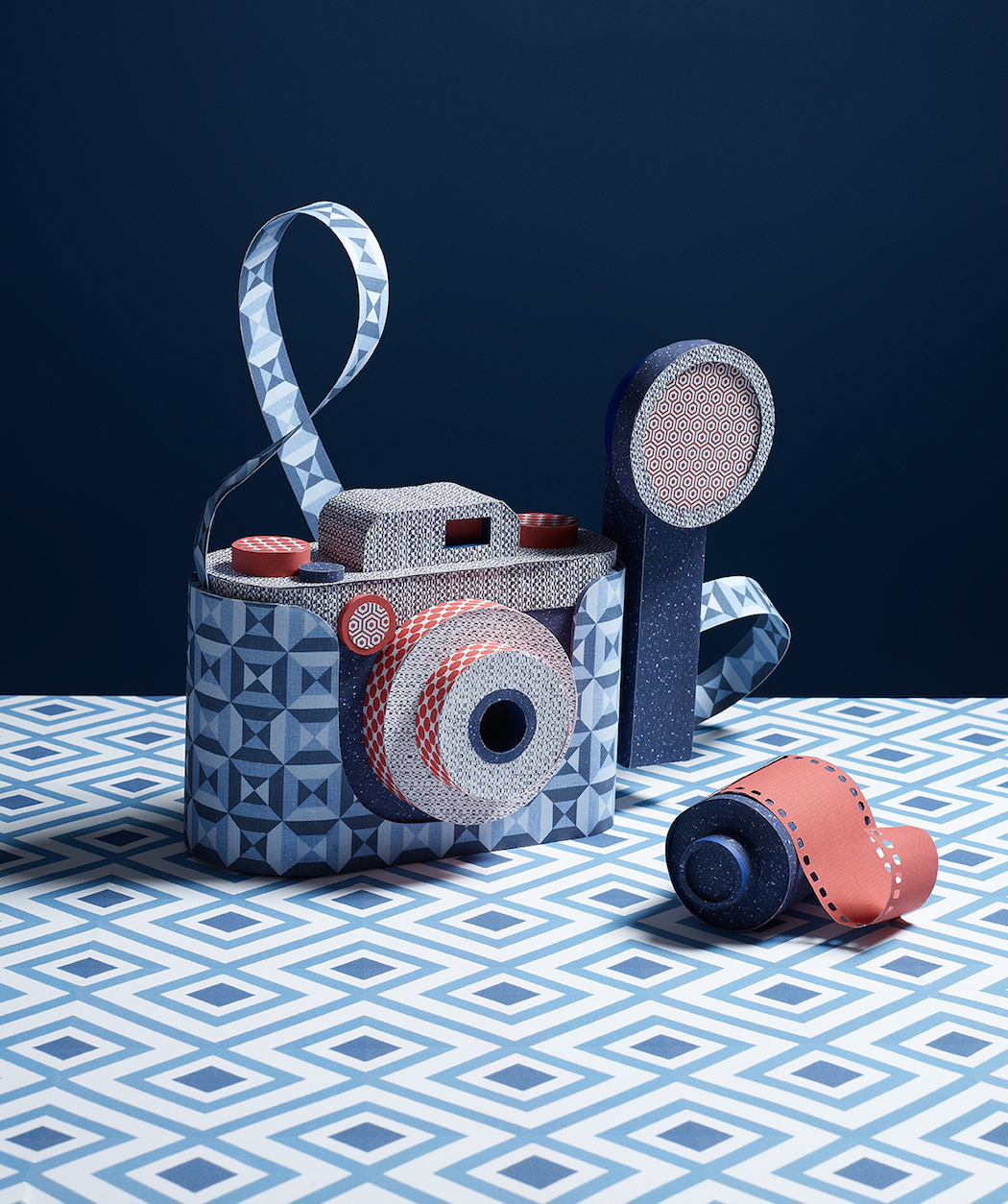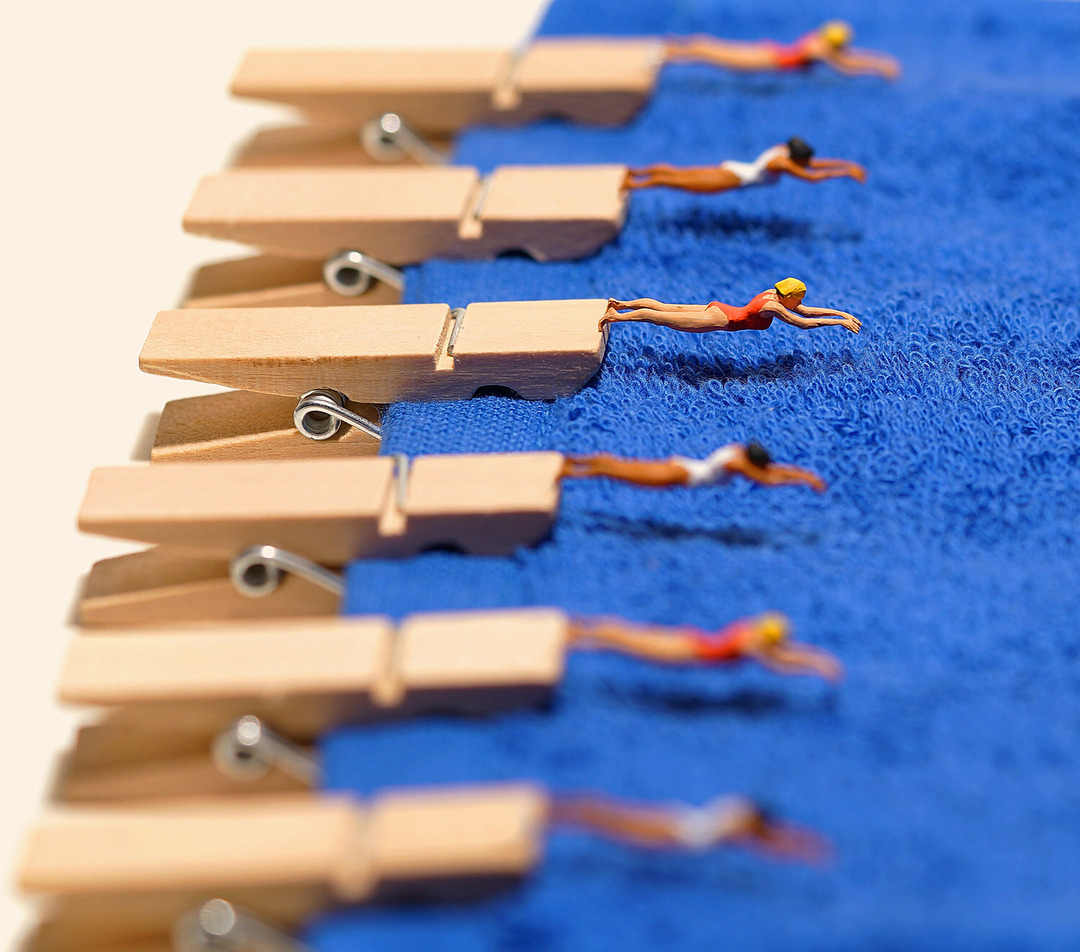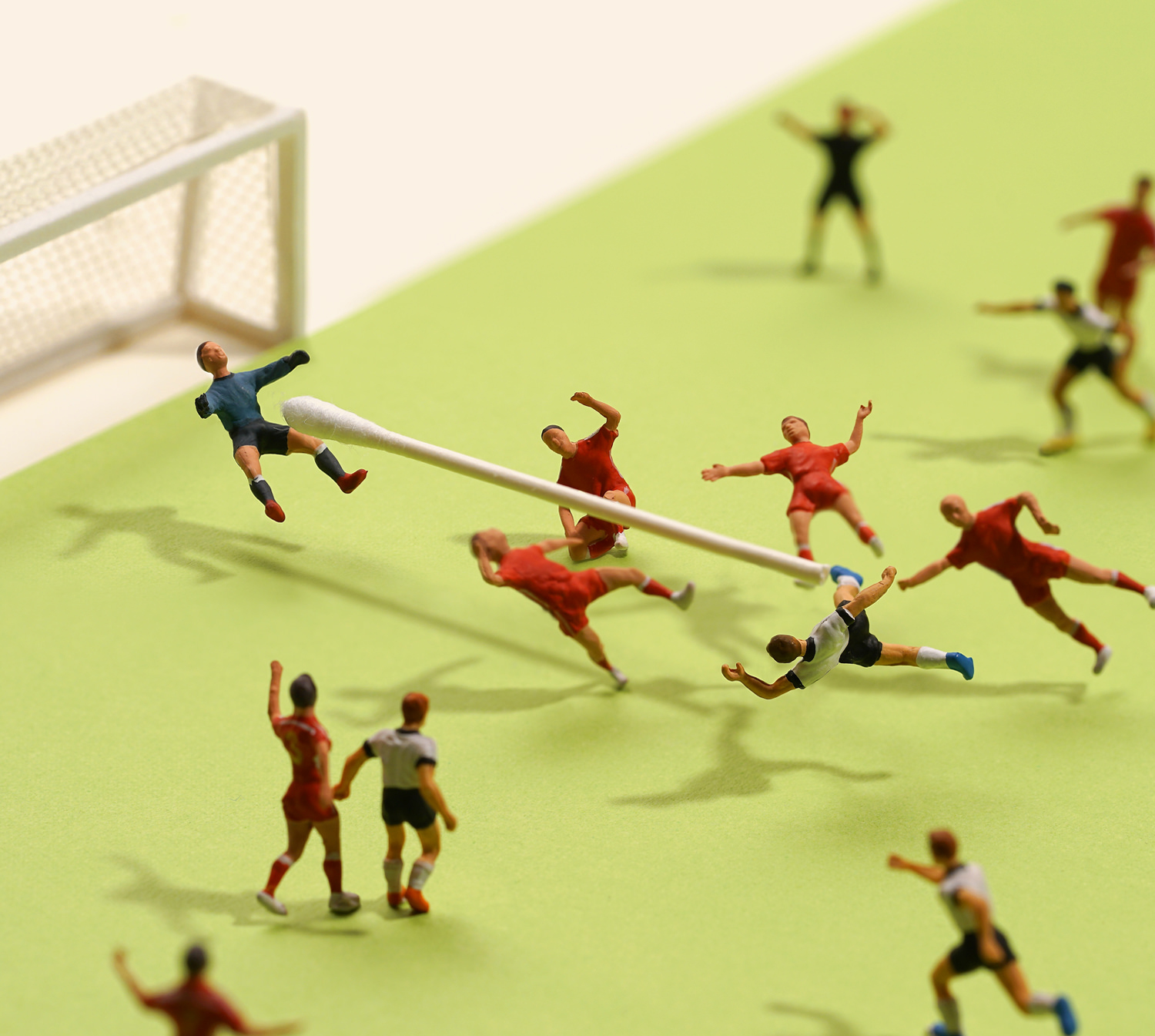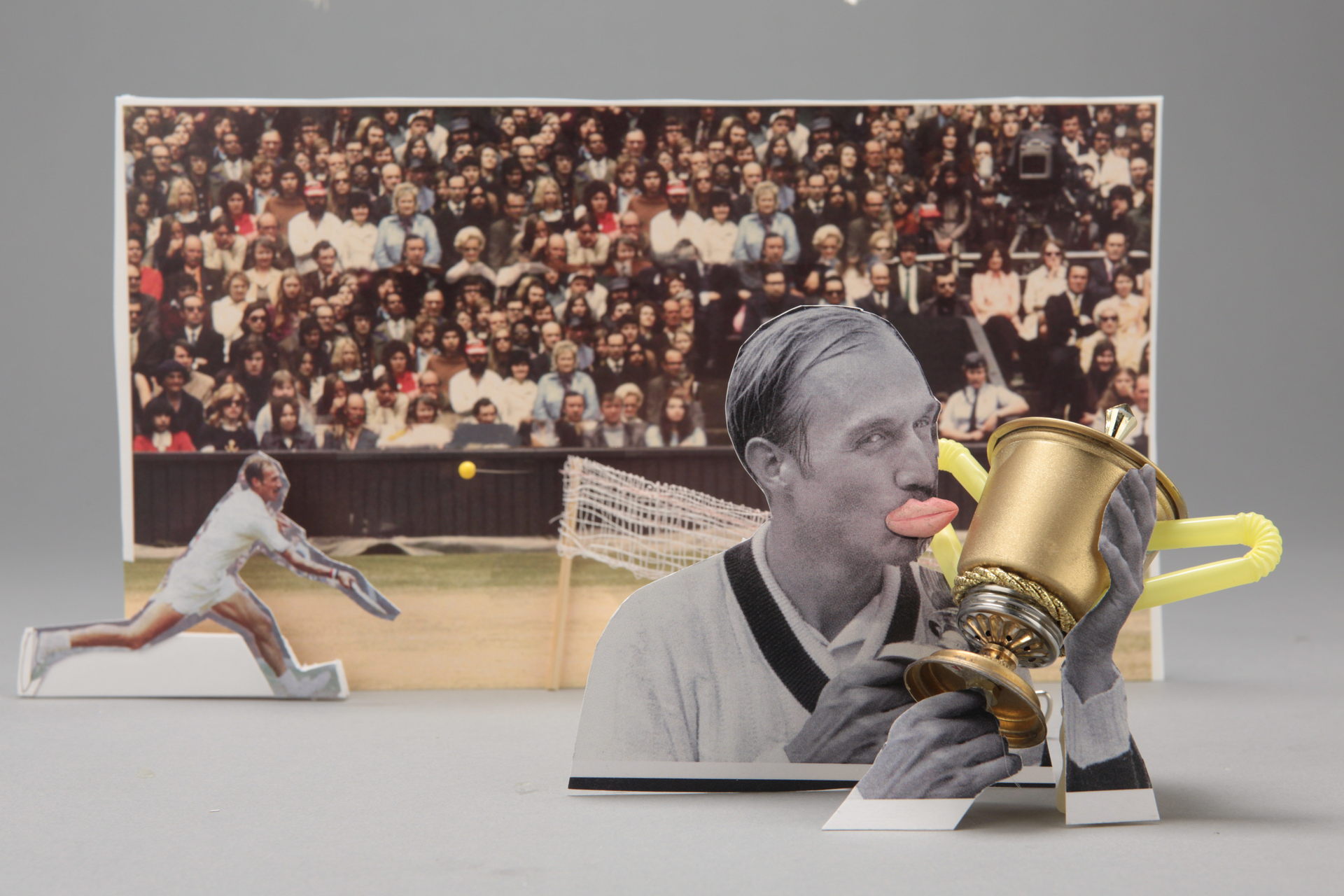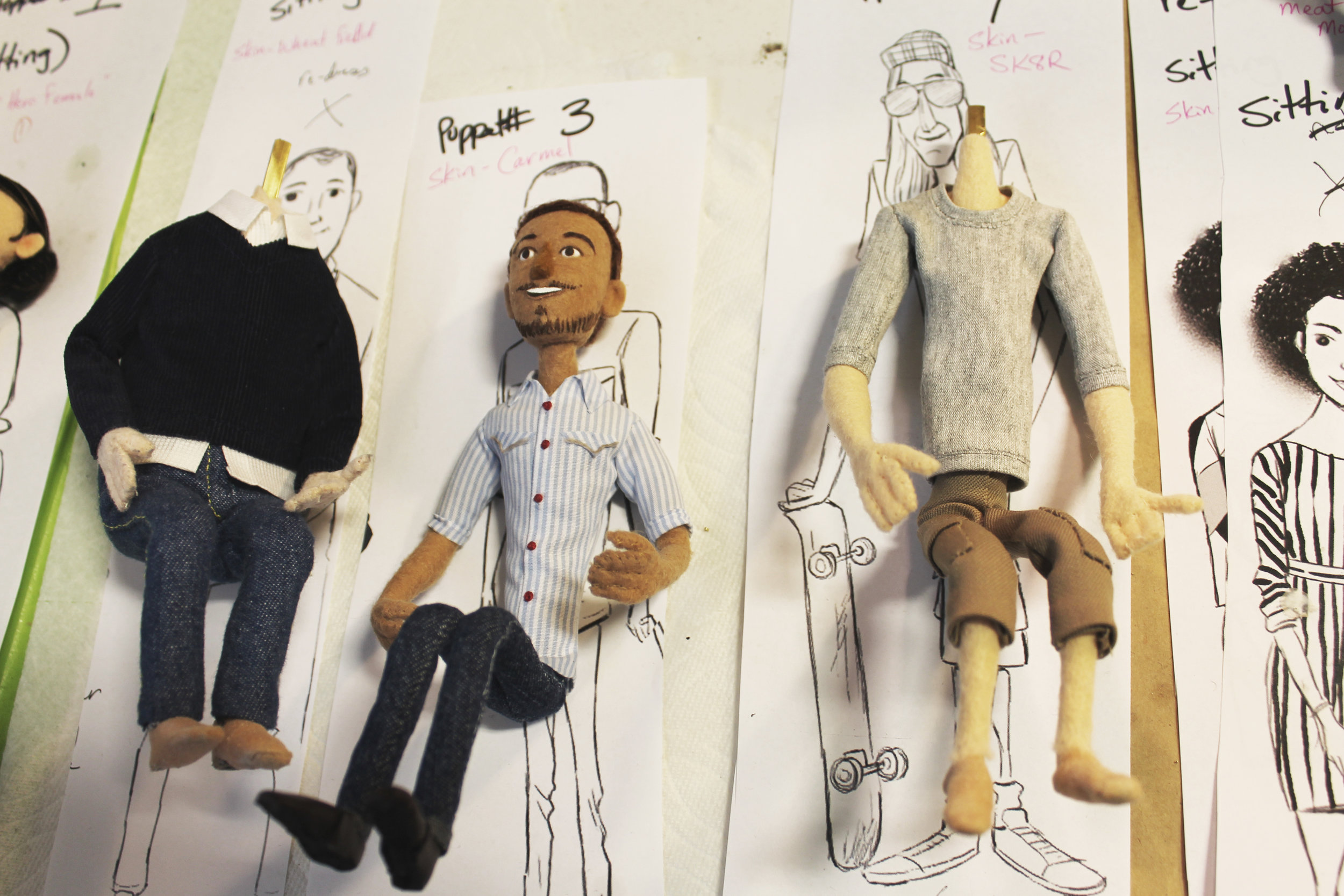I remember my first pair of adidas.
It was 1985. I was 7 years old.
There it was, my very own blue box; white stripes and everything.
Sambas. Black and orange colorway.
I was so f-ing proud. I was one of the cool kids.
On our street I was the kid with the adidas.
Believe it or not, my childhood hobby was making models.
First trains, then tanks and onwards, building more and more elaborate dioramas.
And here I am now, all grown up, and it’s my career.
If there was a Venn diagram for how this project brings together sneakers and dioramas, I sit squarely in the middle!!
The blue box is iconic. Instant recognition.
And that moment when the lid POPs!! to reveal the immersive diorama inside is so exciting!
At its base is the imagination of our young polymath who is sharing their version of adidas’ style and history, but this is no ordinary shoebox diorama. We aren’t limited to the art materials in the craft cabinet.
We will take opportunities to use recognizable household shapes where appropriate, but elevate the execution far beyond the skills of a 12-year-old.
Every set piece will be arranged to further the story of how this shoe travelled through time, from inception to now.
Cut-out images from glossy magazines may have their place in a middle-school diorama, but we will take the high road in the execution of these spots.
Much of the dynamics will come from the camera transitions, and how we introduce each scene.
This entire project will reflect the unique nature of both the shoe and its many wearers. It should portray the appreciation of these people for what the shoe brings to them, and boast of what they give back in return. And it should do all of this through the lens of the kid whose enthusiasm inspired this box.
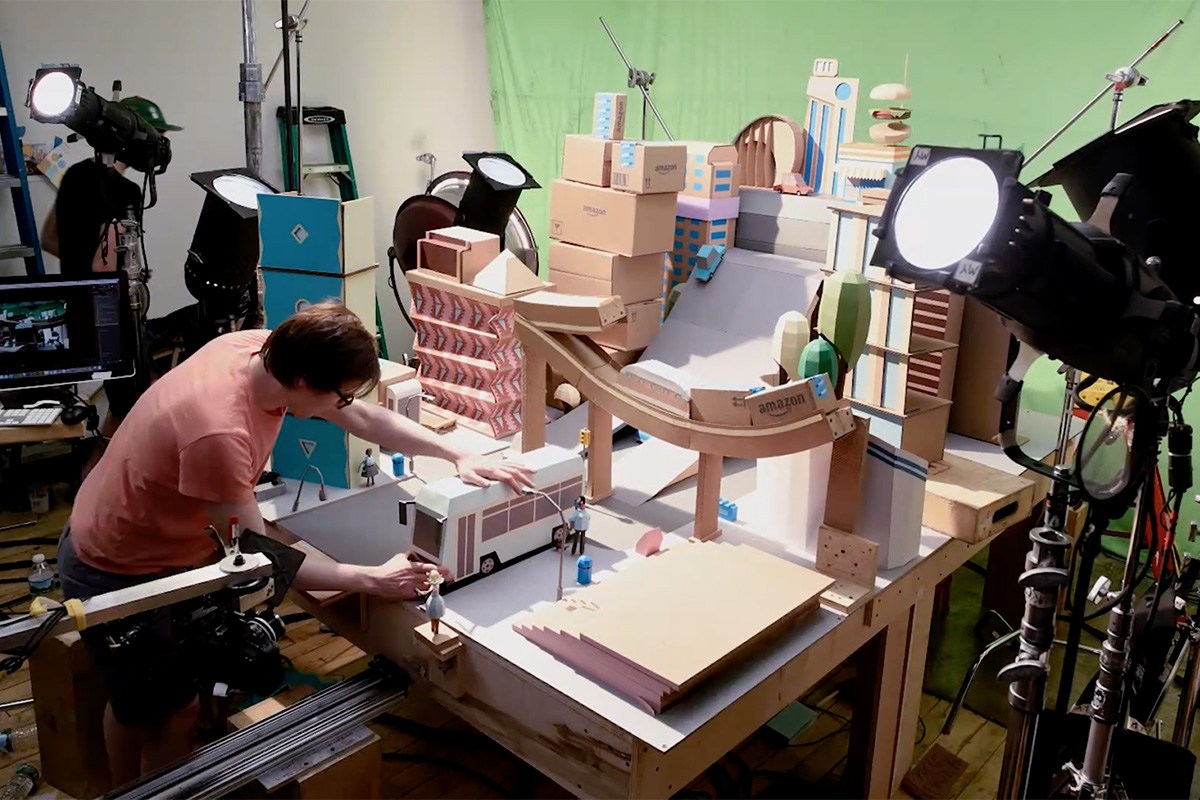
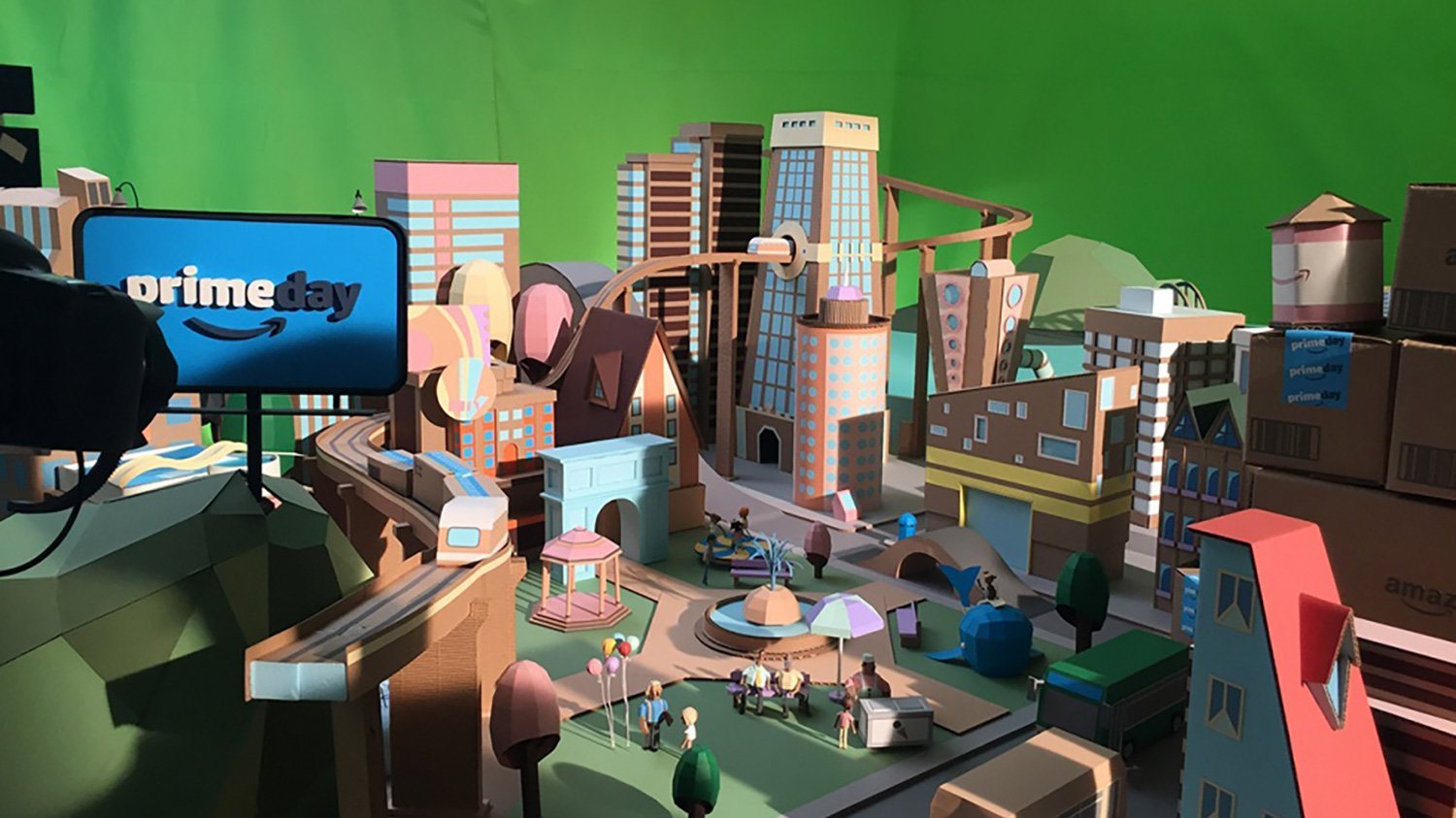
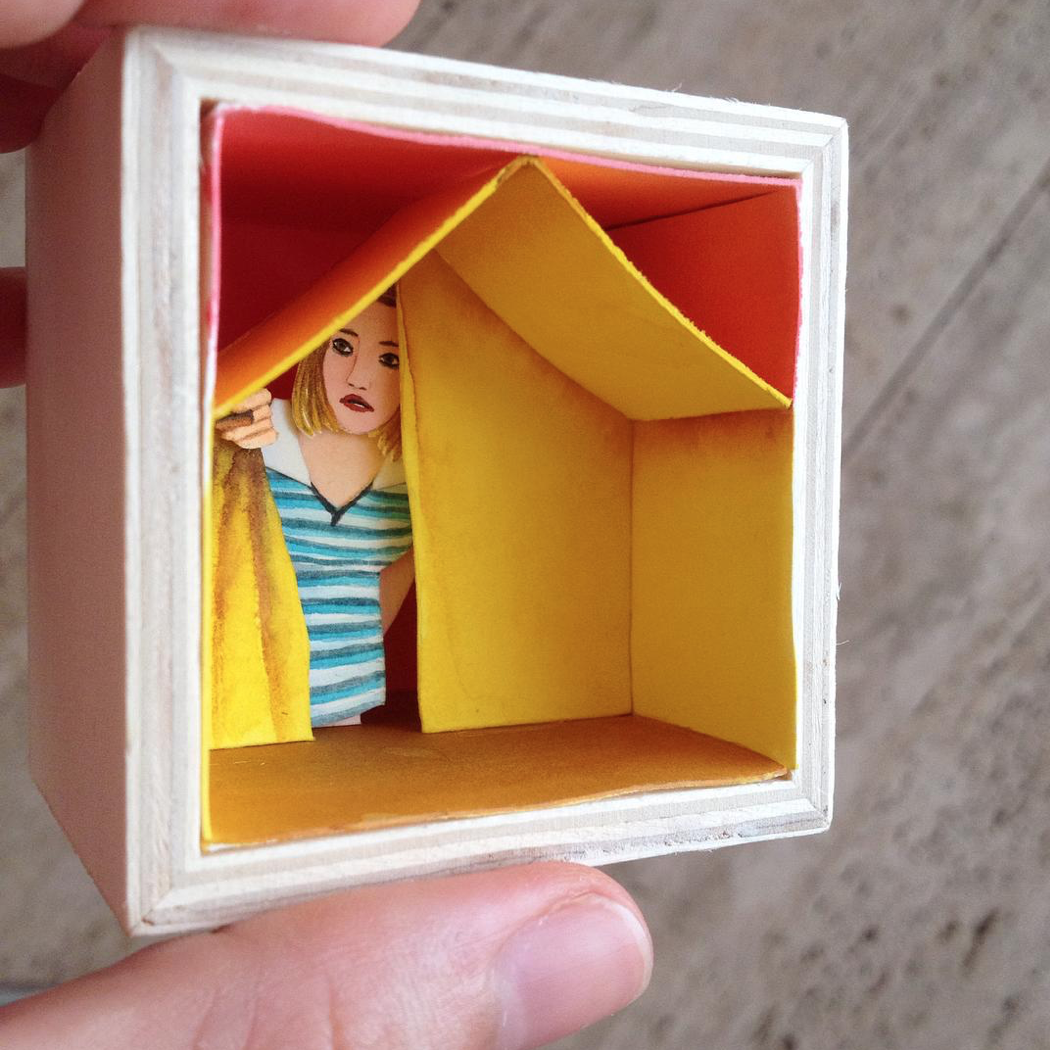

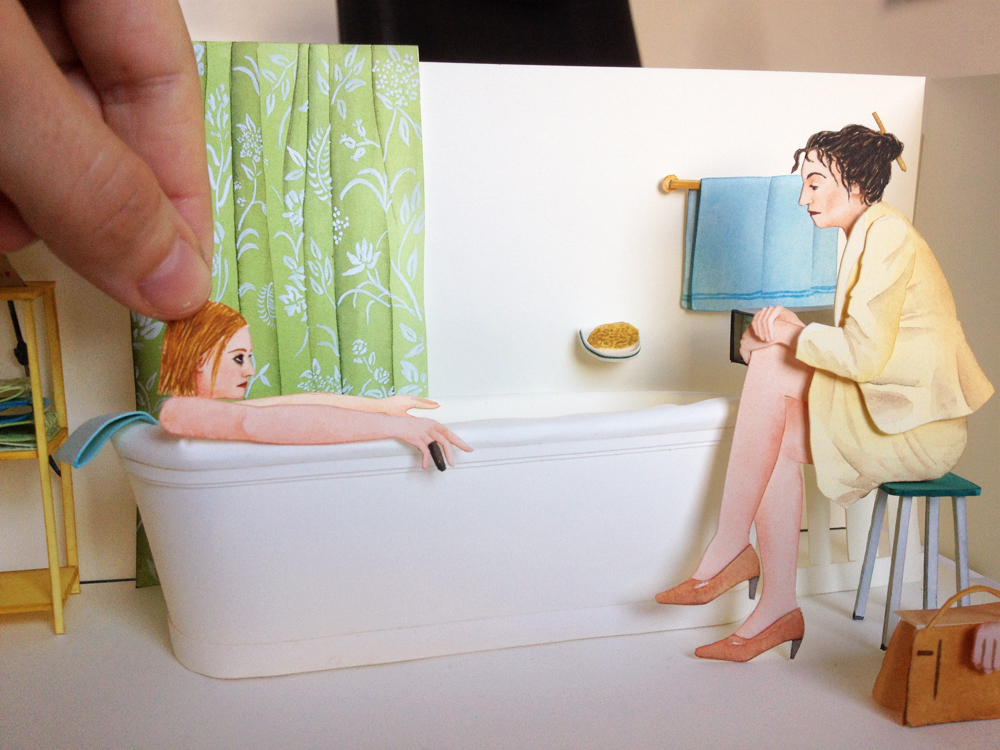
As we move through the spots, there are opportunities to add in smaller vignettes between the highlights and also see other scenarios within the box in the background; noteworthy moments in time that emphasize the effect the shoe has had on the world at large. With this in mind, it is key that the licensing arrangements happen as quickly as possible, to give us the chance to use them to the greatest effect.
So far as the recognizable celebrity aspect of each story goes, we will hold archival photographs as our basic core medium, to allow for the images to read instantly.
We will collaborate to make sure we use a wide range of additional, more creative ways to portray our scenes -- hand-sculpted models, illustrations, collages, projected 35mm film, even tiny tft screens can all be used to add depth and variety to the journey.
These are, after all, iconic moments in history!
Rather than a long winded description of each spot I want to spend some time on the mechanics of some of the moments spread across the various scripts.
JUST A FEW THOUGHTS…
Let’s say the box is lying flat, and both the lid and the front wall open up:
Inside we can create a dimensional wonderland of elements for the audience to work through, simply done, but perfectly executed.
The sequence starts and ends with a shoe box, though not necessarily the same one… *wink*
A nice detail add is to sculpt a dimensional model of the sneaker in several scales.
Picture that scene where we are on the runway at the Celine fashion show. There is a cardboard cutout, the silhouette of a woman at the far end of the catwalk. As the camera whirls around, we track right along the side of the shoe: we slow down a little to admire it - clean, crisp, white. Tiny Christmas lights begin to flash and pop, reflecting back off the tiny model sneaker and, ramping up, we pull back to reveal the wearer - Phoebe Philo taking her final bow.
We see that the flashing lights are coming from the adoring crowd, phones in hand… and off we go!
Cardboard cutout where the only dimensional element is the shoe…so when we do a 180 we get the profile of the flat cutout figure, but the shoe is dimensional in all its glory. For instance, could work for the runway shot of Phoebe…low camera looking up at the silhouette of her back, then the camera races forward, panning to keep the shoe in frame as it rushes right by the dimensional shoe. As it passes, it continues to pan as it pulls away to reveal Phoebe front on and heroic.
There’s another awesome moment where we can use this mixed media format.
1986. Madison Square Garden.
A solid beat is pumping from a practical speaker. Maybe we can even clear usage of ‘My Adidas!’ The crowd are holding up their shoes in solidarity.
Actual little shoes, which we see in all their tiny beauty as we push through the crowd and catch a glimpse of RUN-DMC on stage up ahead.
A hand-drawn animation sequence of a skateboarder. Each frame is printed and stood up like a domino rally. As we knock them over we see the skater slaloming and performing tricks, weaving its way through the box.
There are a number of moments in both scripts where we can use these sculpts to give each shoe their own impromptu close-ups.
A wind-powered B-boy ready to spin on a tiny cardboard mat. I figured this would be easier to see than read, so we built a test.
Ideas
Film strip rolling around thread spools to show movie references. Would be great to see a flashlight being shined through a hole in the box that flares camera as it goes through to find the film playing at the right speed - our kid creator is a genius!!!
Flat panels of cutout crowd being pulled up into place with string one after the other as the camera clears each row of cheering onlookers.
Cuts in the camera are on action and follow the same plane or the same speed as the preceding shot.
Depth of field to control the eye and to imply more depth to the box. Also plays well with the miniature world. Like the tilt/shift lens.
Side wall of the sneaker box is filled with an exposed speaker. Could be the backdrop of the stage for Run DMC and the start of the pullback for the kid in his room making beats.
And surrounding all these tiny moments, a crowd of onlookers, celebs and ‘norms’.
The models and scenic displays themselves will be awesome. That’s a given.
But we can add so much more to a scene with motion!
We aren’t building a Rube Goldberg machine here, but it would be great to see a few key things move practically.
Kareem’s Skyhook is such an awesome example of a strong graphic shape, so let’s use it again!
Kareem is going toe to toe with Larry Bird, hanging frozen in mid-air, his arms reaching high above his rival in his signature pose. As we fly the camera down through the hoop, the ball drops past us and we follow the direction of its bounce!
Let’s create a flip book sequence, and have a popsicle stick release catch, carefully holding the pages back so they flash past the lens at the perfect speed.
A simple carousel with a series of frames set around its circumference edge would be so cool, gently spinning and adding detail to our story. We could even build a little Zoetrope, its light flashing out through the tiny slits in the side wall - enticing us over to take a peek! Inside is a Muybridge-style run cycle, but instead of a horse in motion, it’s a loop of a breathless Bill Murray from Life Aquatic.
Let’s avoid just plopping a video monitor down to show a video loop.
I’m a real fan of repurposing things, or using the right thing for the wrong purpose.





So, in keeping with our overall vibe of ‘things from round the house’ let’s utilize some alternate methods to offer up video:
Imagine our wunderkind has a handy adult they could convince to help out with a spot of technical wiring.. I love the visual of a chunky sat-nav box stacked into one of our moments, rewired to play clips of old footage.
Mini TFT screens can also be programmed to play bitmap video and animation, with fantastic flickery, chunky results.
We see still frames mounted in space with mini flashlights shining through them. A charming little homemade projector. A great opportunity for a little lens flare, but also two options for the shot: looking directly at the illuminated negative/slide OR swinging the lens around to see the image projected onto a surface.
Creating this kind of simple projector will also set us up for the chance to use projection later in the film, without the need to reveal where exactly the light source is.
We can also use projection mapping to add graphics and footage to a scene:
Whipping back around from Kareem’s sneaker, we see the space around him is full of flat white cutout shapes.
Half a beat later, they flicker and burst into color; and reveal that they are the players around the court, each one a little cycle of action.
It would be a great chance to create a dynamic callback, a moment where we feel we are passing by an area of the shoebox diorama that we have seen before, but this time the content is different – a potted history of the Stan Smith, changing right before our eyes!
adidas pride themselves on handing their product over to the consumer and celebrating what they achieve with it.
This pair of spots will reflect the history of specific adidas shoes, filtered through the vivid imagination of our 12-year-old originator, and realized through the hands of a high-performance animation crew. It’s the perfect collaboration!
((also.. can we all just imagine a lowrider car, bouncing up and down on wobbly springs, simply because it would be great.))
This whole treatment has been a riot to think about, and we are very excited to explore and develop it with you.
thanks for reading!
x
gee
FWIW, I wear a US 8.5
What Happens Next?
I want to share a little bit of our process. Luckily we’re neighbors so this next bit is way simpler.
We will start out by sketching up scenes and designs, sharing them with you along the way to ensure that all voices are heard and we’re moving in the right direction.
Using a mixture of storyboarding and cg previs we will work up a simplified animatic. This will give us basic actions and timings and allow us to make informed decisions on shot length, performance, composition, etc. Once we have animatic approval it’s JUST a matter of copying that into reality as we build the spot for real. Simple, right?
Animatic approval is key to us. This is our reference for scale, movement, camera action - everything we need to know as we move into the build phase. We don’t build what we don’t need, so we can make sure what we do build is the best execution possible.
Early stages of the build are made from simple materials; foamcore allows us to mock up quick shapes so we can test camera moves. We’ll share these tests with you so you can see how the designs are forming - this is always a great moment for discussion and approval. Then we move quickly into full build; rigging elements for motion, lighting and final dressing and finally animation. Each completed shot is dropped into the animatic timeline until the whole timeline is full (happy day!!)
There’s a whole host of genius people who whirr into action at this point, cleaning up the shots, digitally removing any rigging we used and etc. And then final color grade & post, and delivery!







